By Kevin Seabrooke
In celebration and commemoration of the courageous actions of the “The Big Red One” during the Allied Invasion of Normandy, the First Division Museum at Cantigny has unveiled two interpretive murals and a companion book outlining both the story of First Division on D-Day and the making of the murals by artist Keith Rocco.
Since it first opened in 1960 on the 500-acre grounds of Cantigny Park, in Wheaton, Illinois, the First Division Museum has been telling the story of the unit nicknamed “The Big Red One.” The park was formerly the estate of Col. Robert R. McCormick, editor and publisher of the Chicago Tribune, and a colonel in the 5th Field Artillery Regiment, serving with the First Division during World War I. The Museum’s mission is to interpret and promote military history through the lens of the U.S. Army’s 1st Infantry Division, including the diversity of the U.S. Military.
Two things happened in 2019 that led to creation of the murals and the new Big Red One D-Day book.
The first was that the museum appointed a new executive director. When U.S. Army Col. Krewasky A. Salter, (Ret.) took the helm, he felt the museum could be updated to improve the visitor experience, and better reflect all who served in the First Infantry Division.
From his personal experiences visiting museums and recent work with the Smithsonian Institute, Salter knew “that artwork was powerful and, when used correctly in museums, it creates a magnificent interpretation tool.”
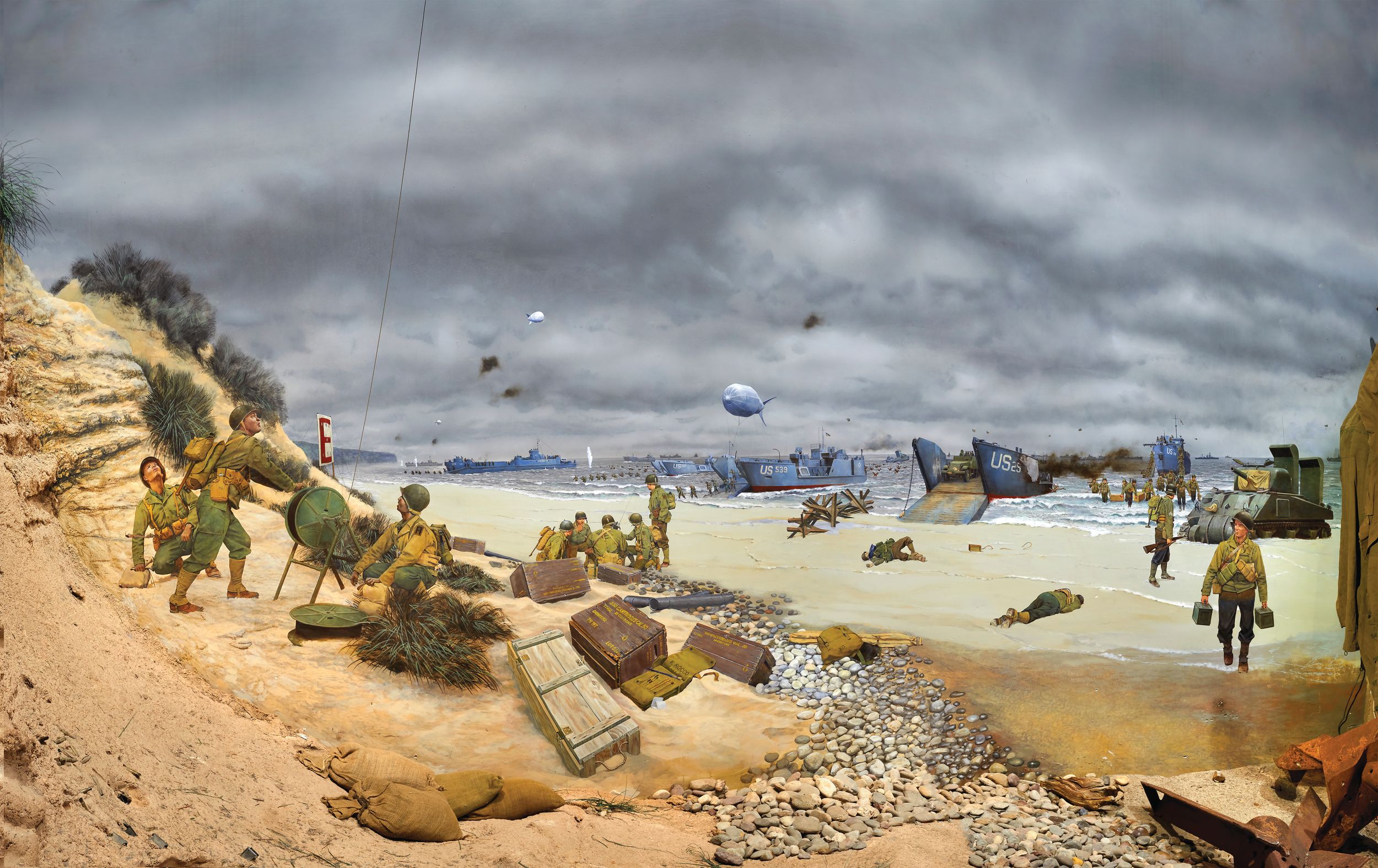
In meetings with the museum staff, Salter said questions began to arise about the D-Day immersive gallery.
“Discussions soon turned to questions of where is the Navy, the Coast Guard, and the minorities that landed on the beaches of Normandy; where are the swimming/fording tanks, and more?” Salter recalls in the book.
As part of this update, the existing mural detailing First Infantry Division’s activity on June 7th at Normandy would be updated, and a second mural added to interpret the June 6th landings.
The second thing that happened was that the museum, in looking for an artist for the project, contacted a man who had been born in Chicago and had, in fact, visited Cantigny Park when he was about 10 years old. Now over 60, that artist could clearly remember the French Hotchkiss machine gun.
“I can still recall putting my hand on its trigger guard, polished by a thousand hands,” said artist Keith Rocco.
Known across the country as a painter of authentic scenes of battles from the age of Napoleon and the American Civil War, Shenandoah Valley-based artist Rocco’s work has been acquired by collectors around the world, including the National Park Service and the U.S. Army, as well as many museums and historical societies. Rocco and his art have been profiled in numerous books and magazines and his prints remain internationally popular.
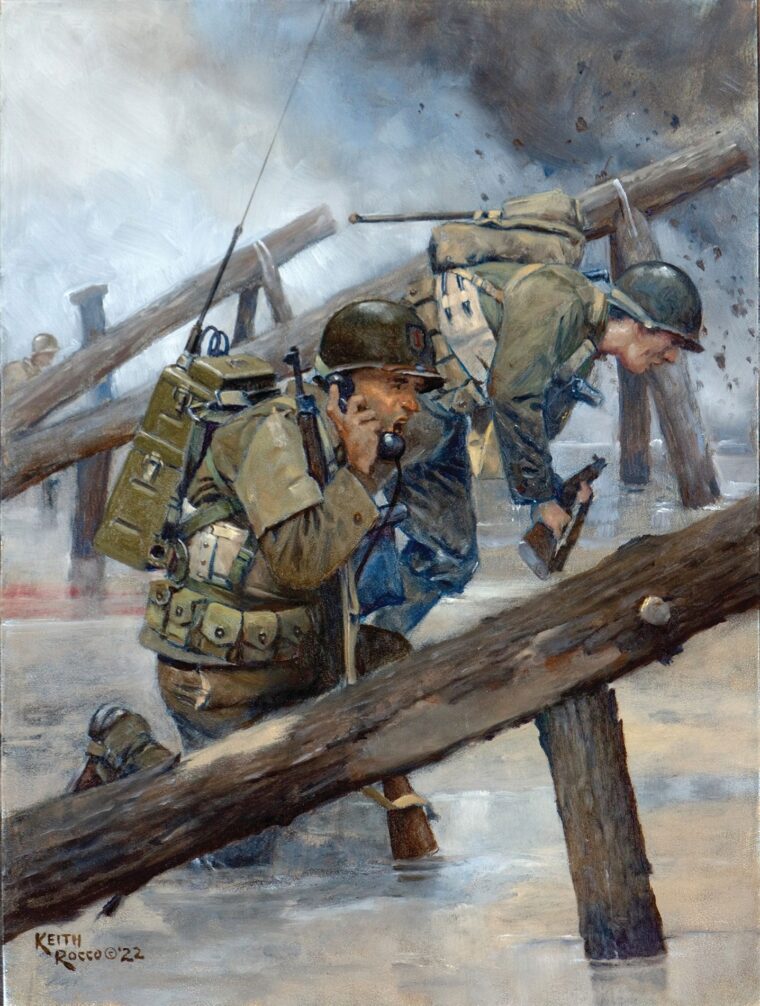
“We were extremely lucky to obtain the acclaimed and highly sought-after artist Keith Rocco,” Salter said. “His paintings include the centerpiece mural ‘Gettysburg,’ for the Abraham Presidential Library and Museum, in Springfield, Illinois, and a one-man exhibit at the Cyclorama Building in Gettysburg National Park.
For Rocco, the feeling was mutual and serendipitous. He got an email in June asking if he would be interested in looking at a project to revitalize and re-interpret the existing mural in the D-Day Gallery of the museum.
“When I received the inquiry about the possibility of having my work in the museum that meant so much to my early years and to my chosen profession, I had to pinch myself that this was really happening,” Rocco said.
A month after that first email, Rocco went out to see the wall and speak with the curator concerning what exactly the staff had in mind.
Rocco’s first trip to the museum had been in 1965, when he was about 10, and the family drove from the Chicago suburb of Cicero out to Wheaton.
“It was a hot summer day,” Rocco recalled. “I know this because I have a picture of myself from that day, sitting on the seat of a French 75 artillery piece and holding my hand next to its barrel, not touching it though, as it was too hot to lay my hand on.”
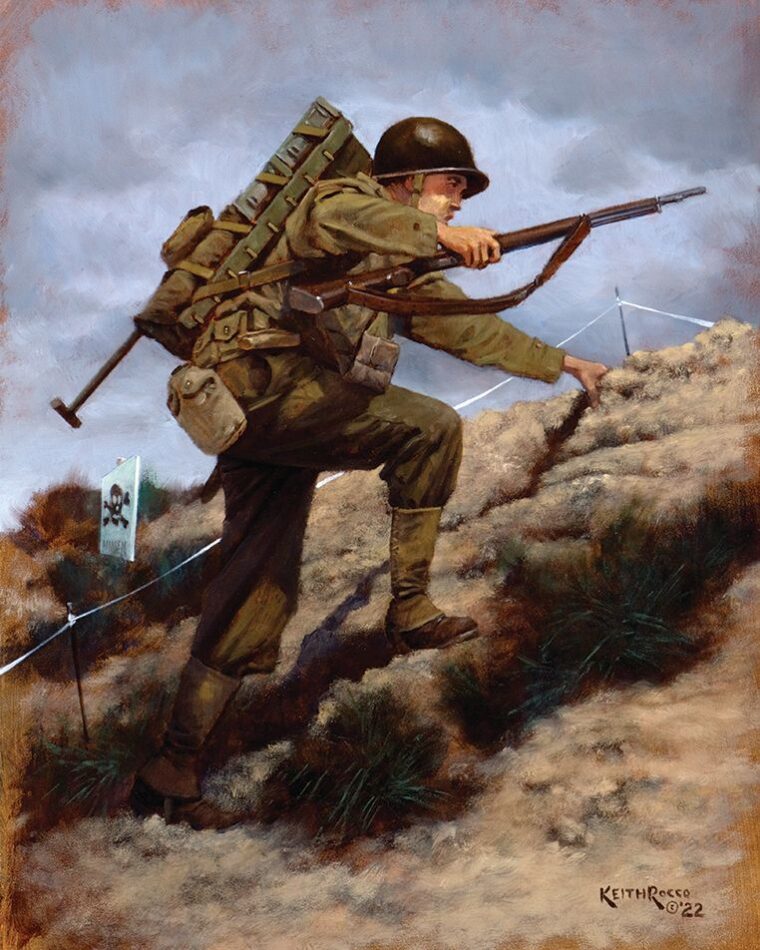
For a boy of that age, the park was amazing—real tanks that could be climbed on—and the visit made a huge impression on him.
“I saw my first dioramas in that museum and the piece-de resistance, the full-scale section of a World War One trench, complete with flashes and explosions that when they went off, lit the sky so that you could catch a glimpse of the barbed wire overhead,” Rocco said.
Rocco knew that his father had been a World War II combat veteran, who never talked about his experiences, though they did watch a lot of TV shows and documentaries together and that was enough to spark his interest in history.
Today’s museum is the “big brother” of the white-washed brick building—McCormick’s tribute and memorial to his beloved division—that Rocco had visited as a boy.
“Looking back through more than 50 years of memories, I realize what an impact the First Division Museum had on my future,” Rocco said. “It was a match to my fuse of interest in history, an igniter full of remarkable stories told through creative displays and artwork.”
Rocco returned to the museum three months after that June 2019 visit to make full-size tracings of all the elements that were in the existing mural. These tracings were made onto acetate, rolled out and taped to the walls. The plan had been to build the composition of figures into the preexisting scene of beach, surf and obstacles adding new landing craft and ships over the old mural work.
“The D-Day mural at the [museum] and other Rocco works are so impressive because he conducts exhaustive research,” Salter said. “Rocco was like a detective on a case… It is our hope that [visitors] enjoy the history and the art of the First Infantry Division, by one of the nation’s best.”
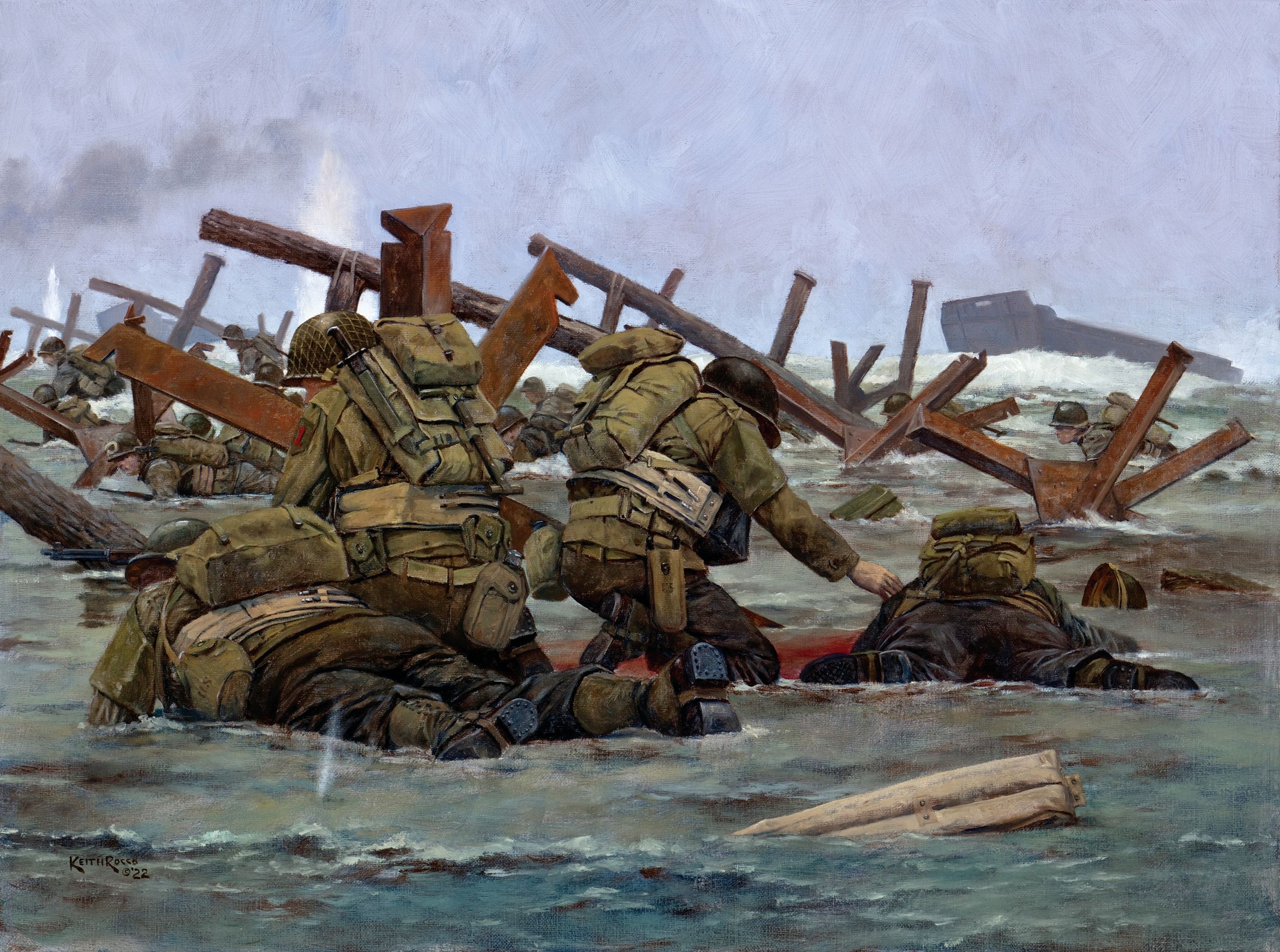
By mid-September, Rocco was in his Virginia studio working on conceptual drawings he would submit for approval. When they were accepted, he began creating full-size drawings.
For this phase, Rocco had a lot of help from the museum researchers and librarians.
“They found the correct types of D-Day ships and landing craft, including their number designations seen on the hulls, for me to work from as well as eye-witness reports and all kinds of minutiae that added to the final visual history,” Rocco relates in the book.
For first-hand details, Rocco also had the help of Ray Lambert and Ed Morrissette, two 1st Division veterans who landed in the first assault waves on June 6.
“Their recollections were both inspiring and educational, adding a human element to the numbers and statistics,” Rocco said. “Both men had made all three amphibious landings with the 1st Division—North Africa, Sicily and Normandy.”
The central theme of the completely new June 6th mural is the medic aid-station in the foreground, Rocco said, depicting things at about 9 a.m. “when the beach of the Fox Green sector was in complete chaos.”
At roughly 8 feet by 18 feet, Rocco said the mural took him about 211 hours to paint, plus hours of preparation in the studio, noting that his months working on the project were “sublime.”
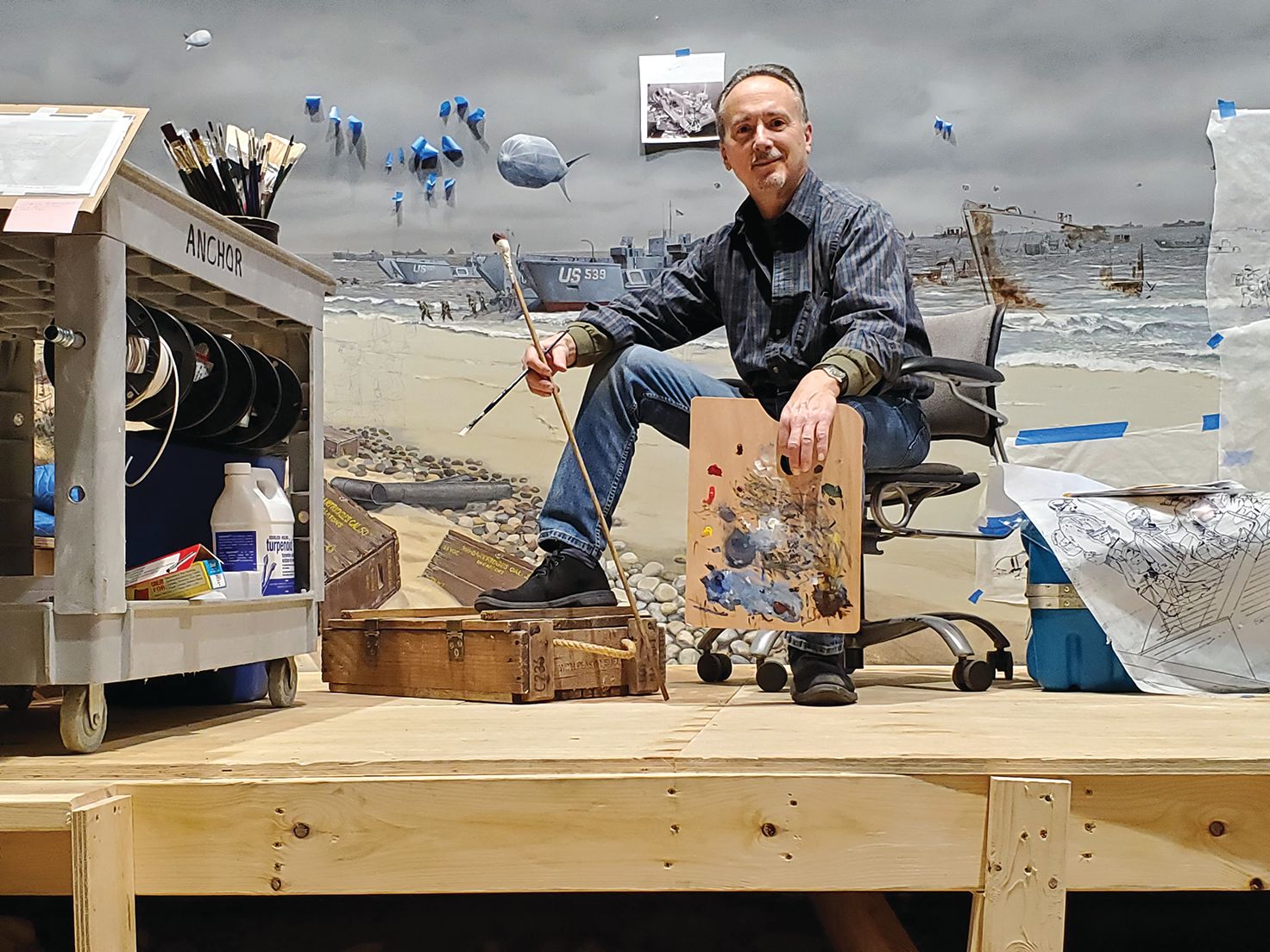
“I hope that what I have done for the museum, and ultimately for the visitor, is to have provided a worthwhile service with these two depictions of such a momentous event in world history and that these murals will help you pause and reflect on the real sacrifice and stoic resignation with which my parent’s generation met its destiny” Rocco said.
The First Infantry Division was organized on June 8, 1917, for duty on the Western Front in World War I. This was the first permanent division in the regular Army and has served in all American wars, except Korea, when it was serving in Germany.
As America’s involvement in World War II became likely, the Division grew to 20,000 soldiers, and began training for war. In 1942 the Division was sent to North Africa, joining the first U.S. amphibious assault of the war on Algeria. In July 1943 the Division took part in the Allied invasion of Sicily where it took part in heavy fighting, serving in George Patton’s 7th Army.
In November 1943 the Division was sent to England to prepare for the invasion of France. On June 6, 1944, elements of the 1st Division, with elements of the 29th Division and the 2nd and 5th Ranger Battalions, made up the first wave that stormed ashore on Omaha Beach.
As is well known today, the Omaha Beach landings were extremely difficult, and little about them went according to plan, resulting in heavy casualties for all the units in the initial waves. Despite heavy casualties, the 1st Division, along with the other units in the initial waves, secured a foothold by the end of the day. Over the next two days, they achieved their D-Day goals and reorganized into their original battalions and regiments for the next phase of the invasion.
The Division fought across France, captured the German city of Aachen in October, and fought in the Hürtgen Forest. The unit fought with First Army during the Battle of the Bulge, and moved into Germany, crossing the Rhine at Remagen in March. The unit then crossed the Harz Mountains and ended the war in Czechoslovakia.
A commemorative hardcover book full of glossy color photos of the murals with notes from the artist on their creation, along with a color trifold insert of both complete murals, The Big Red One D-Day is available from Monroe Publishing for $49.95 at https://bit.ly/3SKqLJf.
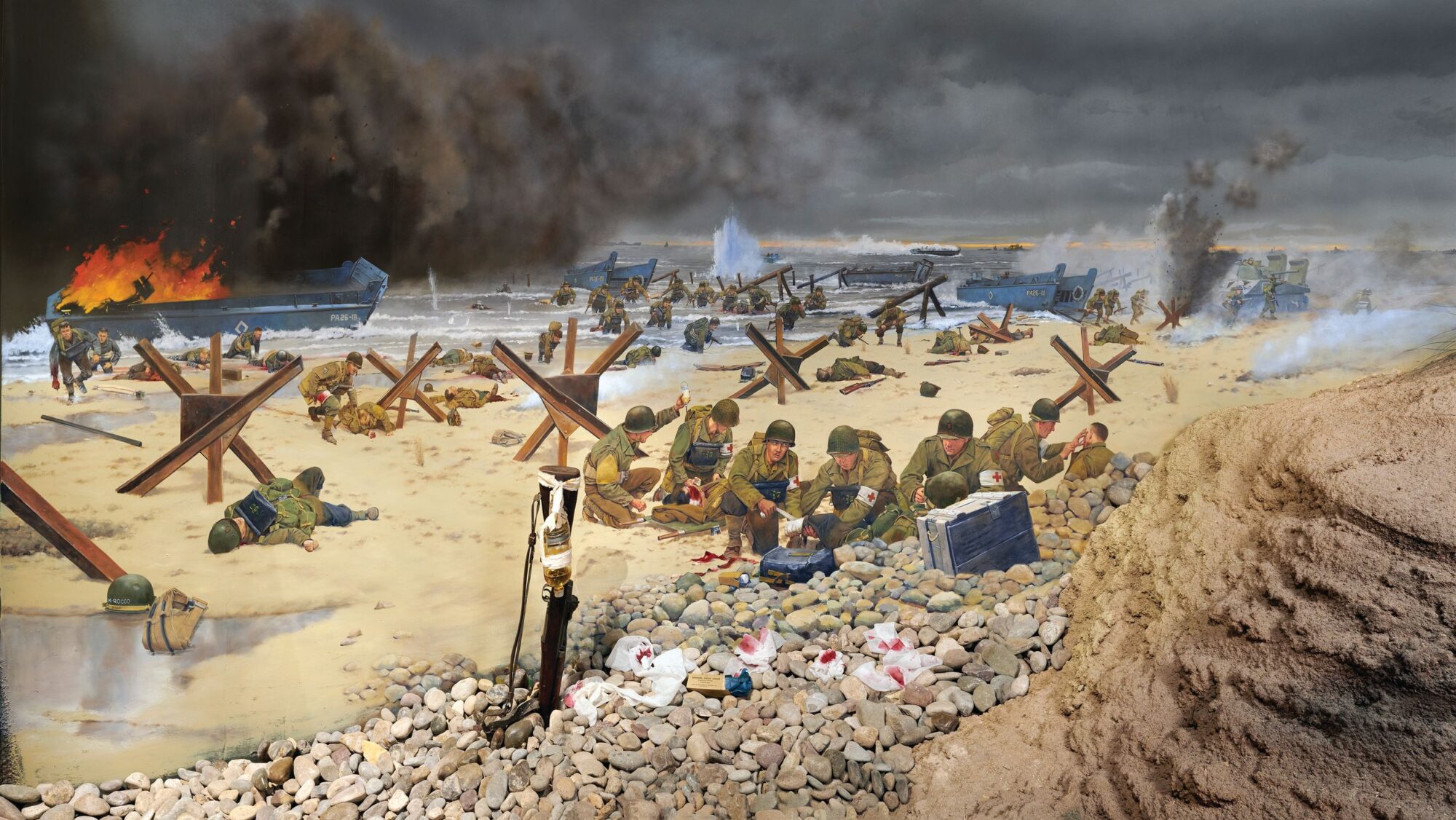
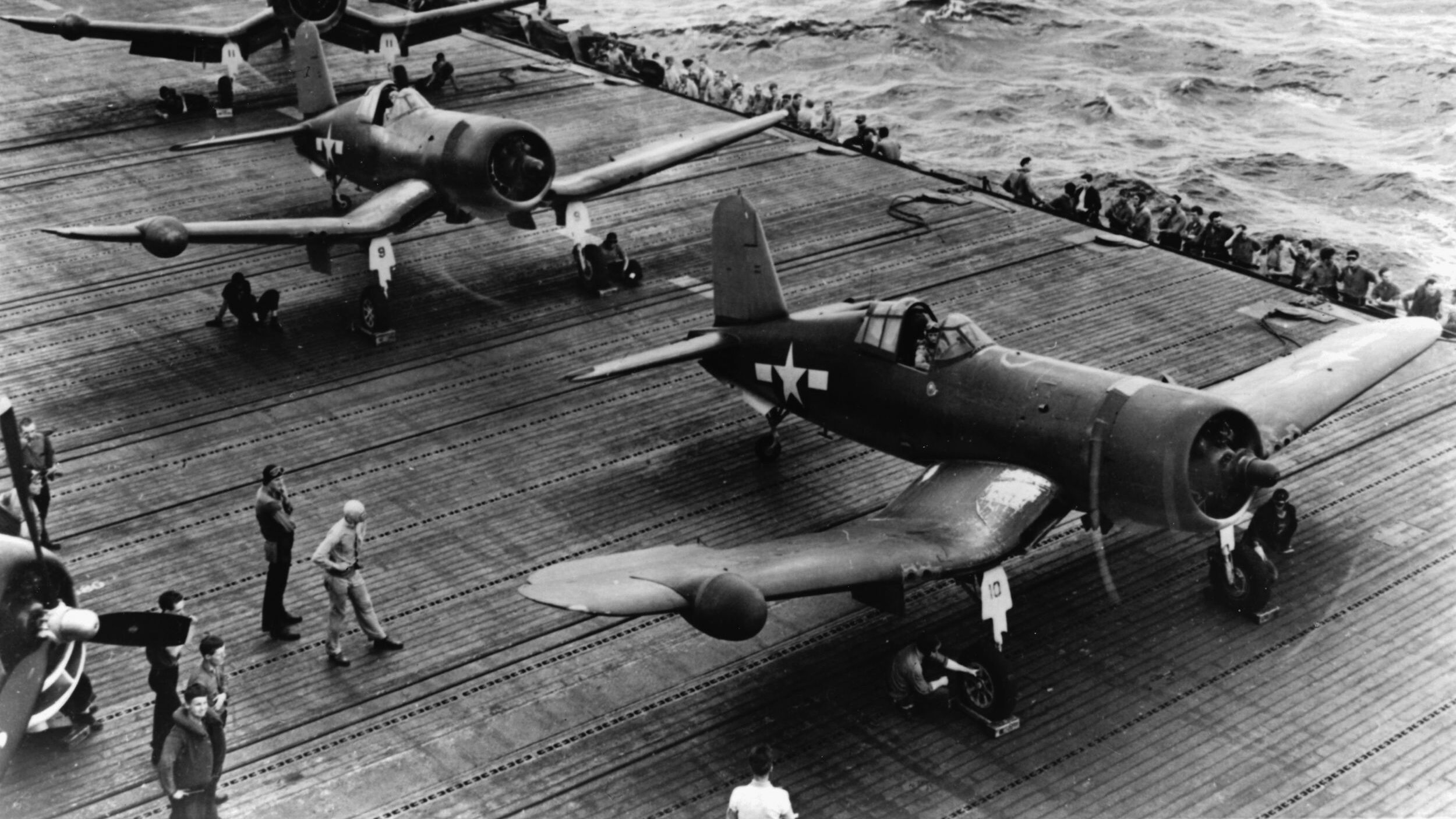
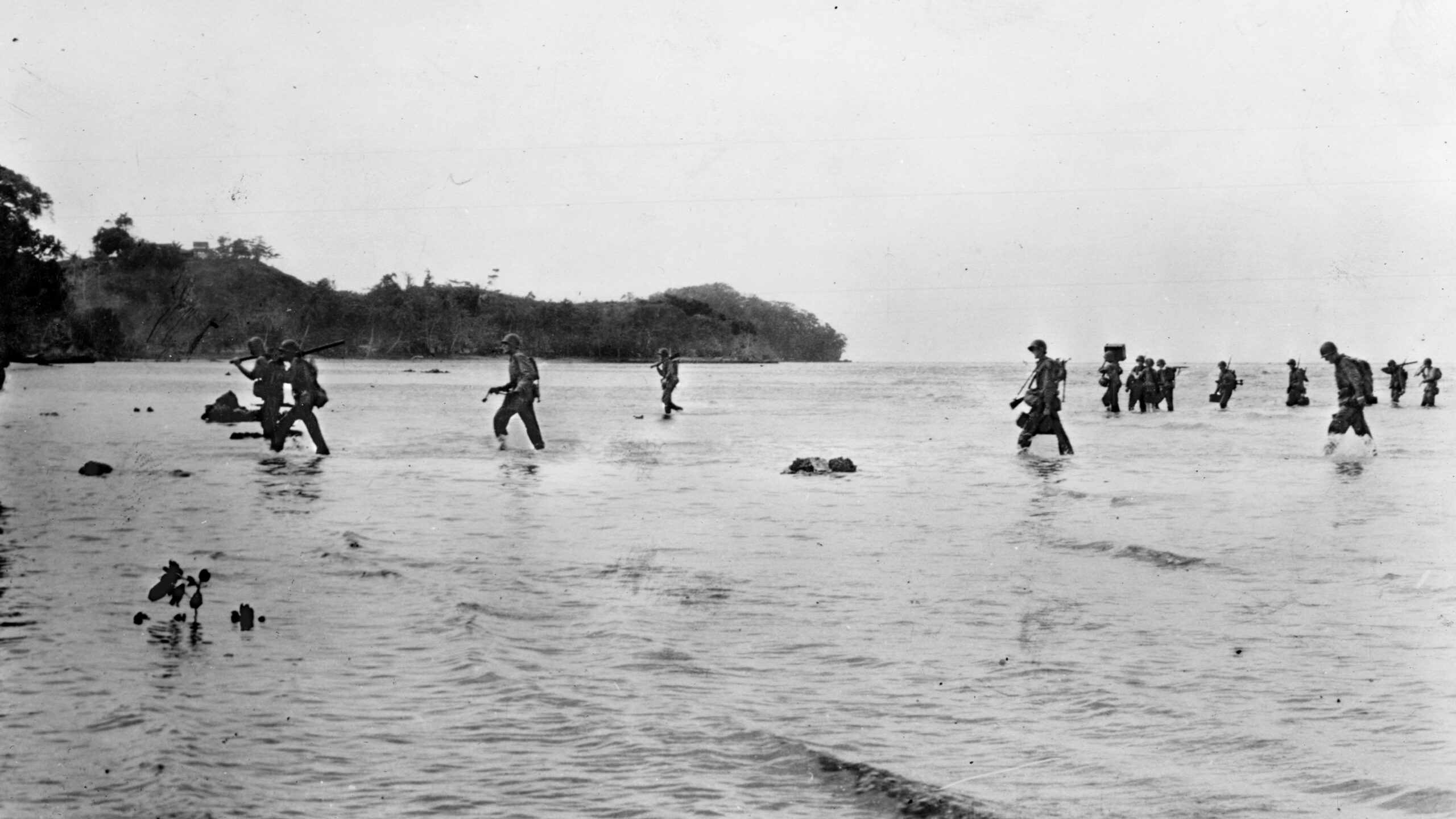
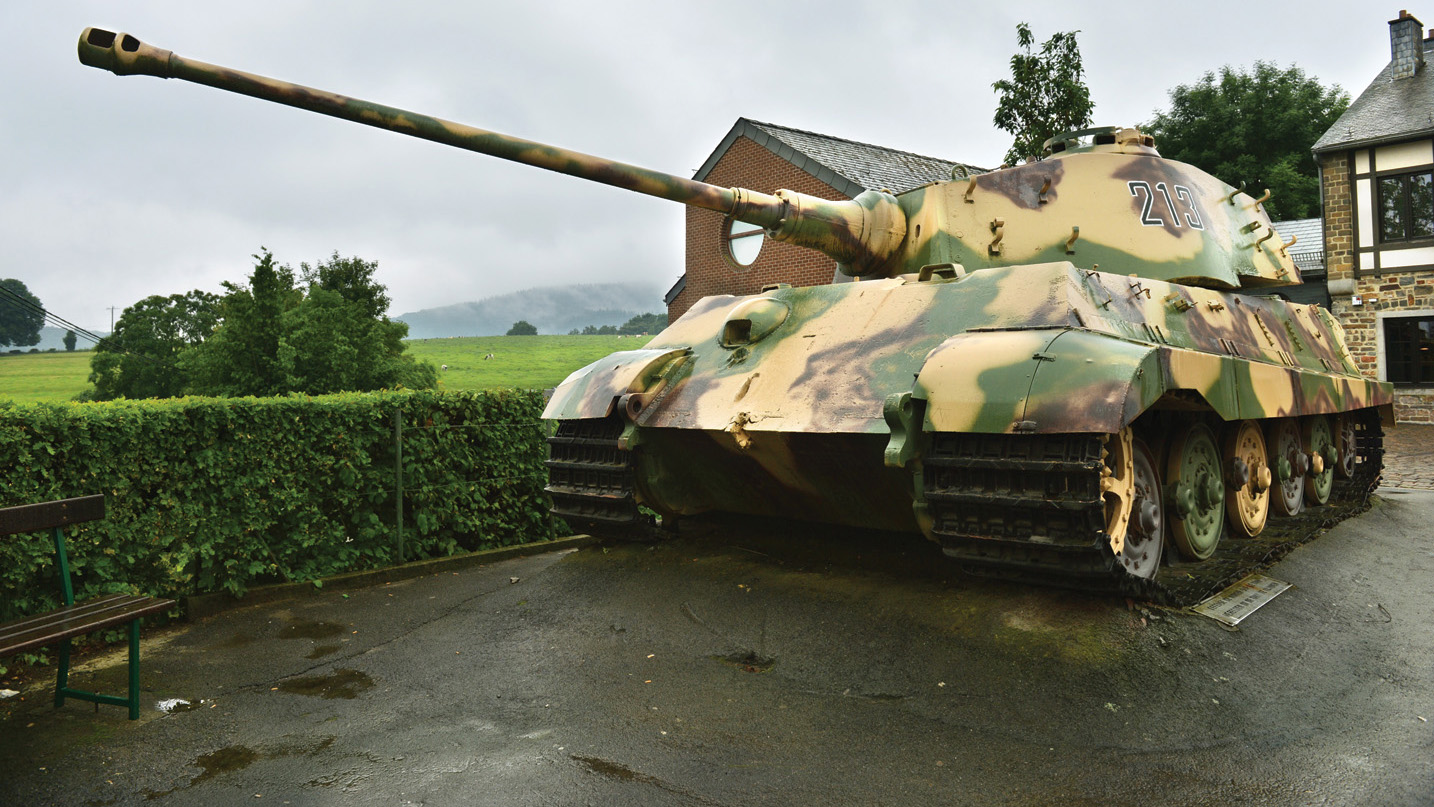
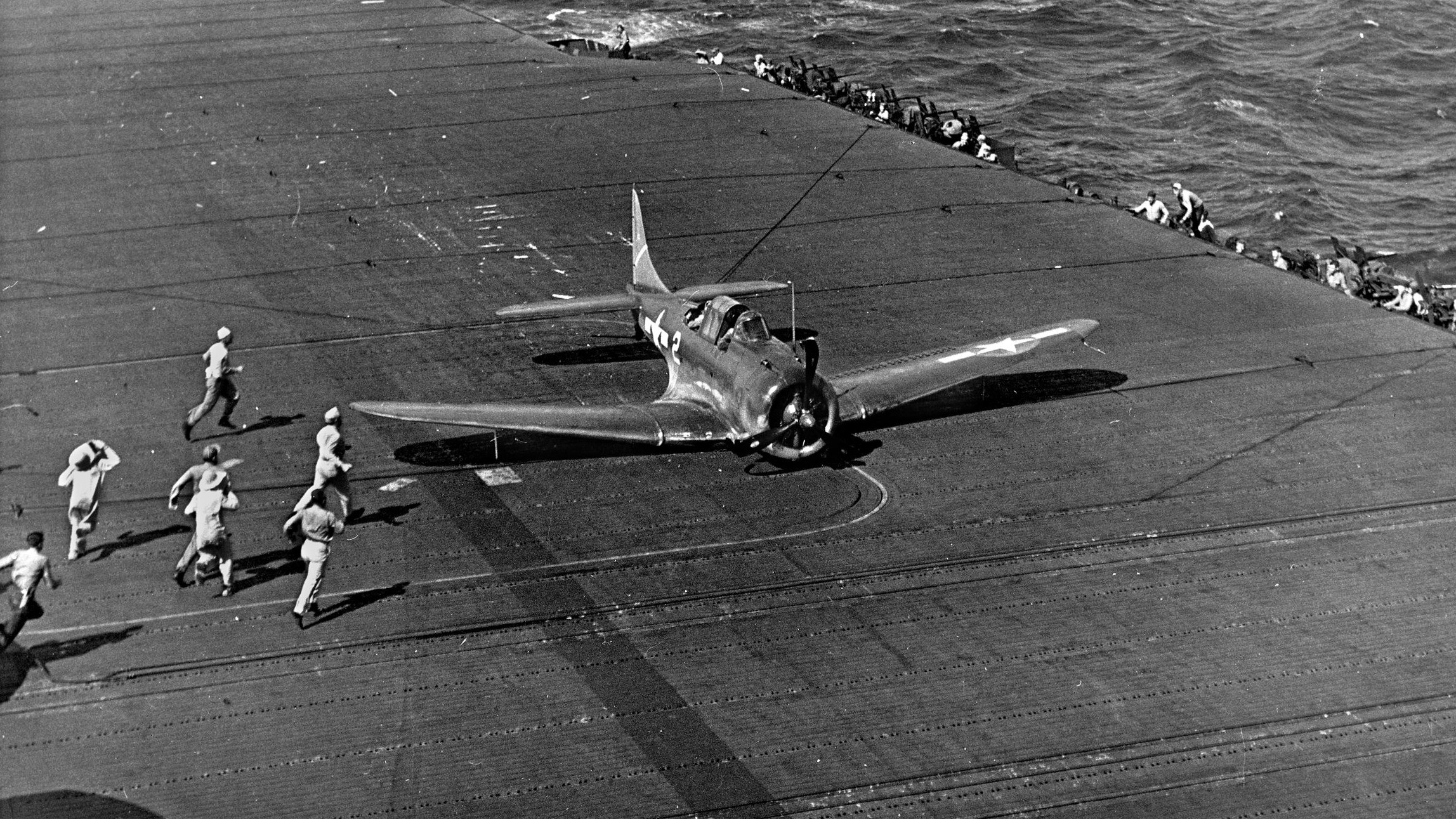
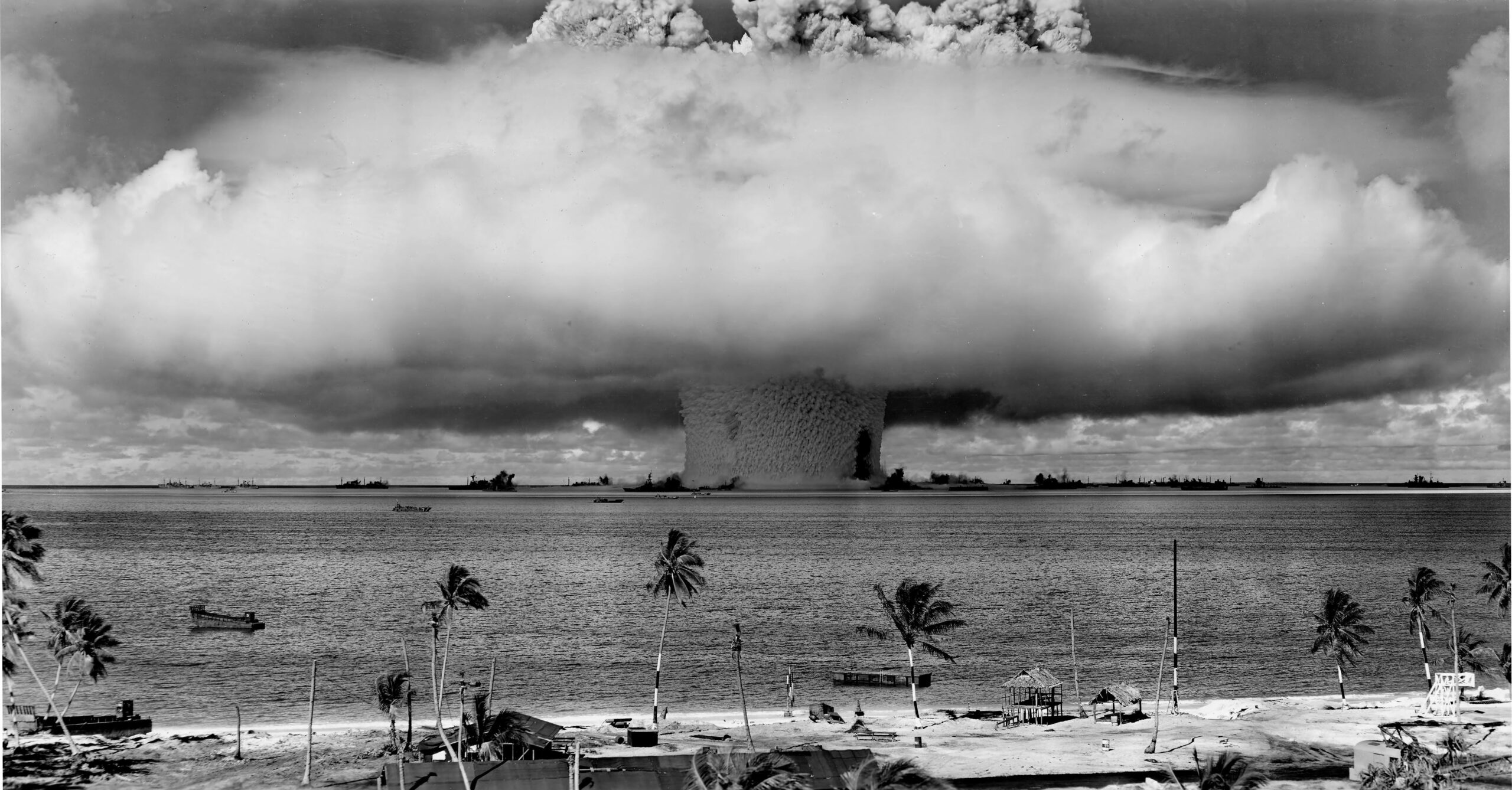
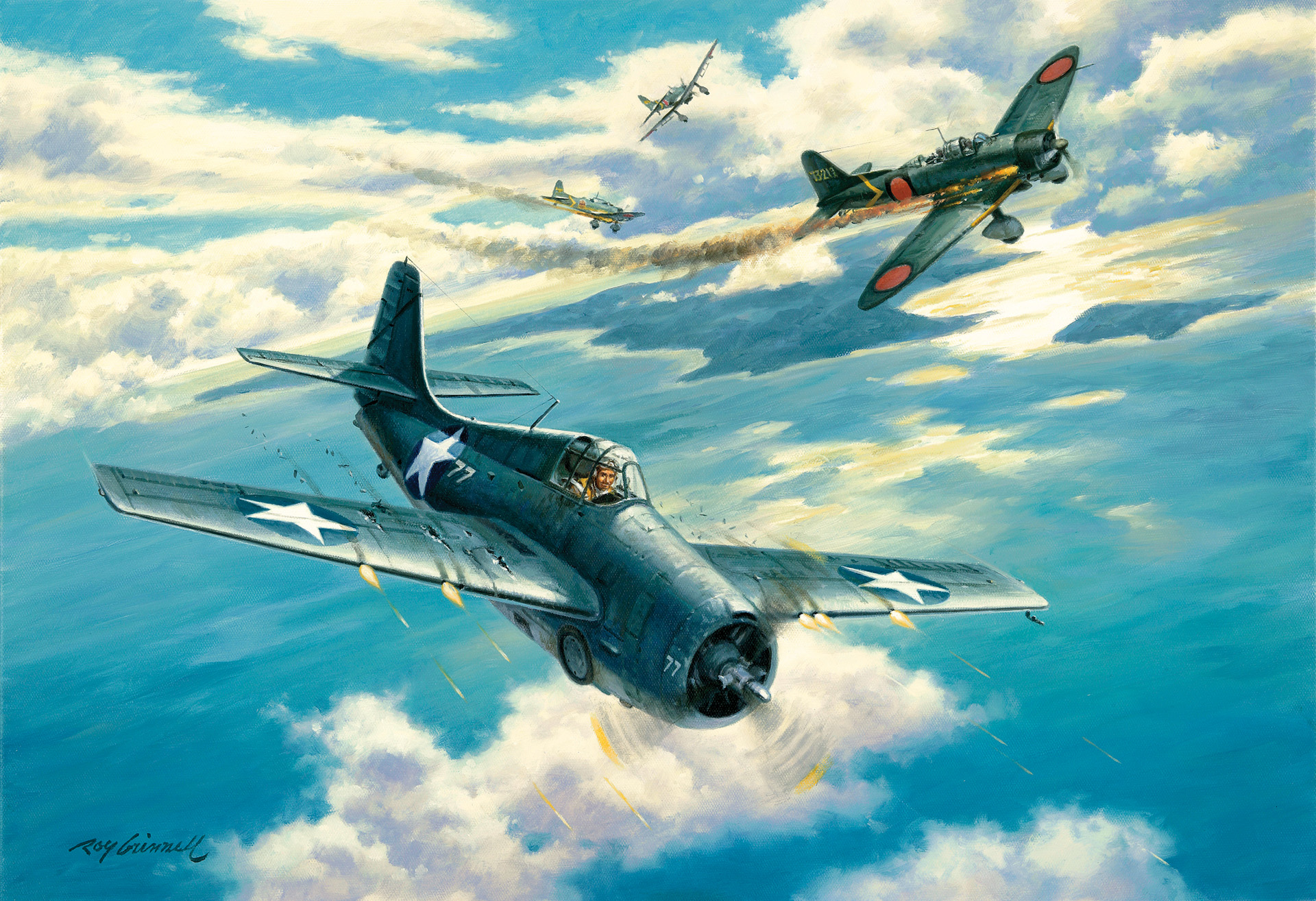
Join The Conversation
Comments
View All Comments